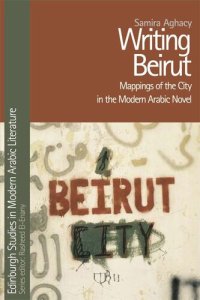
Ebook: Writing Beirut: Mappings of the City in the Modern Arabic Novel
Author: Samira Aghacy
- Year: 2015
- Publisher: Edinburgh University Press
- Language: English
- pdf
Takes a geographical/spatial approach to Beirut seeking to understand how the city is imagined in fiction
Exploring the ways in which writers utilize the spaces of the city – joining the factual with the imaginary – this book shows how idiosyncratic perceptions of Beirut are produced, generating an infinite number of Beiruts. The city emerges as interactive, dynamic and historical, a place that is created from the streets, buildings, and monuments as well as through performance and social interaction. By referring to factual places in Beirut, the novels produce a strong reality effect through a mimetic mode of expression. Simultaneously, these texts reveal that Beirut is an unstable locale that resists fixity and transparency, shifting between the real and imagined, and the quotidian and discursive.
Writing Beirutexplores the city in 16 Arabic novels focusing on the urban/rural divide, the imagined and idealized city, the city through panoramic views and pedestrian acts, the city as sexualized and gendered, and the city as a palimpsest. While the book focuses on Beirut in Arabic novels, the introduction provides a thorough overview of Beirut in the modern Arabic novel.
Key Features
- Takes an innovative approach to Beirut focusing on the spatial and geographical in a close literary analysis of 16 modern Arabic novels from various parts of the Arab world
- Shows how Beirut is imagined in fiction and how writers use the spaces of the city
- Draws on sources from the field of geography and space including Foucault, Lefebvre, de Certeau, Sja and Rose